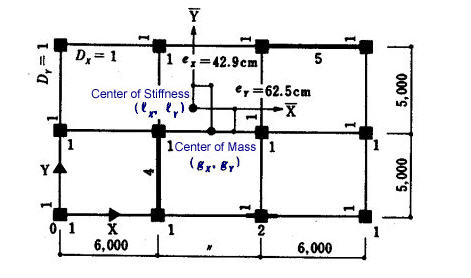Story Eccentricity Table
|
|
|
|
|
|
Check or modify the story eccentricities of a building structure in a spreadsheet format table. For eccentricity ratios, Story Center for Eccentricity Ratio must be defined in Building Control Data.
When "Story Shear Force Ratio>Consider Story Module"is checked in the "Model/Building/Control Data", accurate shear forces can be obtained for the story having the overlapping Module.
This function has no relation to Results > Result Tables > Story > Define Module.
Table Tool in MIDAS/Gen offers a variety of powerful built-in functions.
Refer to the following items for detail directions: Usage of Table Tool
Terminology
Familiarize with Usage
Basic directions (Cell motion, selection, size control, etc.)
Data manipulation (Add, delete, modify data, etc.)
Copy/Paste data using clipboard
Supplementary Table functions
Table Sorting
Table format setting
Auto-fit column width
Graph printing
Supplementary functions by Table types
Node/Element Table
Results Table |
|
|
|
|
|
|
|
From the Main Menu select Results > Result Tables > Story > Story Eccentricity.
Select Result Tables > Story > Story Eccentricity in the Tables tab of the Tree Menu. |
|
|
|
|
|
Upon executing the Buckling Mode Shape Table
function, Records Activation Dialog prompts. Click
Note
Refer to Usage of Table Tool and check the following data:
When Modules are not defined
Story: Story ID
Level: Story elevation level
Weight Center: Location of the center of weight
Stiffness Center: Location of stiffness center
Ecc. Dist.: Eccentricity distance
Torsion Stiffness: Torsional stiffness of the story at the stiffness center
El. Radius: Elasticity radius
Ecc. Ratio: Eccentricity ratio
When Modules are defined
Module: Module name is defined in Define Module
Story: Story ID
Level: Story elevation level
Weight Center: Location of the center of weight
Stiffness Center: Location of stiffness center
Ecc. Dist.: Eccentricity distance
Torsion Stiffness: Torsional stiffness of the story at the stiffness center
El. Radius: Elasticity radius
Ecc. Ratio: Eccentricity ratio
Note Eccentricity Ratio
(1) Background to Eccentricity Ratio
A lateral seismic load is considered to act through the center of mass in a building plan as shown in Fig. 1. The building structure then undergoes lateral displacements while rotating about the center of the stiffness due to the stiffness eccentricity. If the eccentricity between the centers of mass and stiffness is excessive, displacements at one side of the building may be undesirably large due to the torsion. The eccentricity ratio is defined as the ratio of the eccentricity to the radius of elasticity, which represents torsional resistance. The higher the eccentricity ratio the greater the eccentricity from the stiffness center of the lateral resisting system (frames, bracings, shear walls, etc.) to the mass center.
Fig. 1 Building with Eccentricity
(2) Calculation of Eccentricity Ratio
The eccentricity ratio, Re is considered in each direction at each story. We will simply find the eccentricities at a floor to demonstrate the concept as shown in Fig. 2. The coordinate system does not affect the outcome; so we will locate the origin at the lower left corner here.
Fig. 2 Torsional notations |
|
|
 after
selecting the output entities such as nodes or elements, loading conditions,
construction stages, etc.
after
selecting the output entities such as nodes or elements, loading conditions,
construction stages, etc.
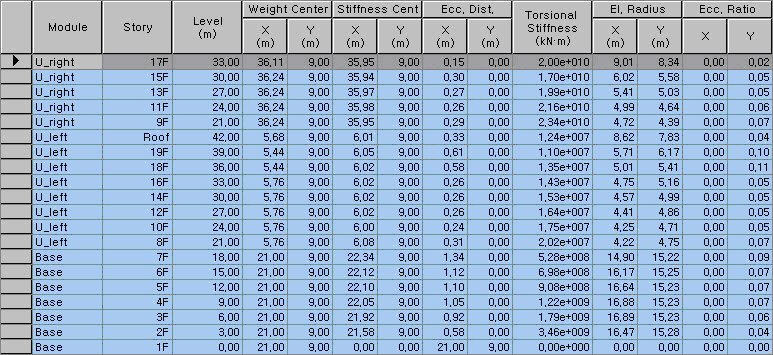
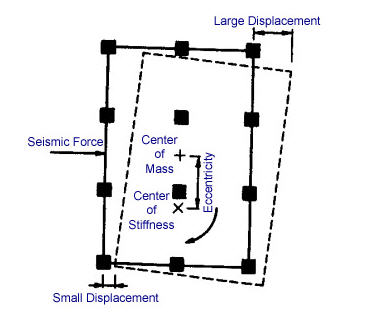
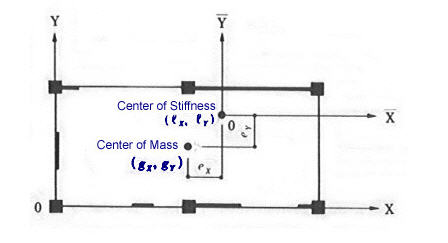
.jpg) Center of
mass (weight)
Center of
mass (weight)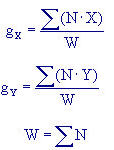
.jpg) Center of
Stiffness
Center of
Stiffness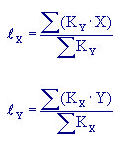
.jpg) Eccentricities
(e)
Eccentricities
(e)
.jpg) Torsional
Stiffness
Torsional
Stiffness

.jpg)

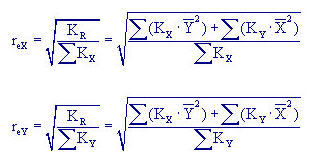
.jpg) Calculation
of
Calculation
of 
